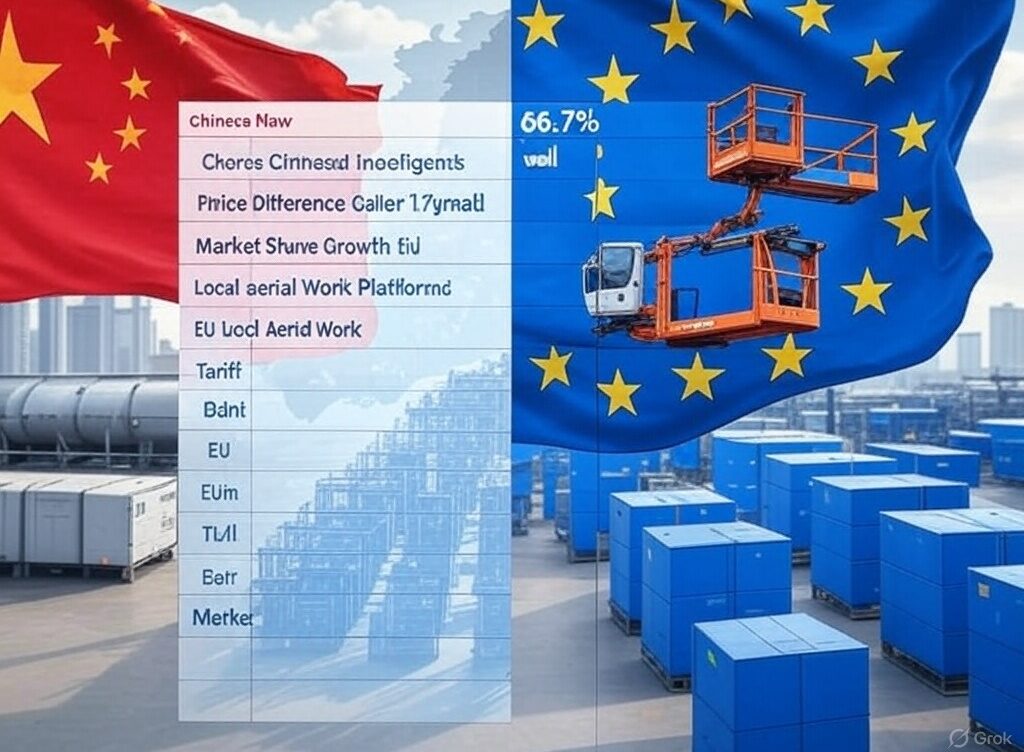
EU Slaps Tariffs on Chinese Lifting Equipment: Fair Trade or Strategic Defense?
In April 2025, the European Commission announced anti-dumping duties of up to 66.7% on Chinese aerial work platforms—a move that signals a growing rift between China and the EU over trade practices and market fairness.
🇨🇳 China’s Strategy: State Support and Price Supremacy
Chinese manufacturers have rapidly gained ground in the EU market. From 2020 to October 2022, their market share soared from 29% to 41%, primarily through aggressive pricing—reportedly 20% cheaper than local competitors. But this wasn’t just about manufacturing efficiency.
According to the EU Commission, these companies benefited from:
- Government subsidies and favorable financing terms
- Access to raw materials at below-market prices
- Export tax rebates and local policy support
In other words, Chinese exporters leveraged a system of state-backed incentives to undercut EU prices—an approach the EU calls “unfair competition.”
🇪🇺 Europe’s Concern: Strategic Autonomy at Risk
While China sees these policies as a legitimate part of its export-driven development strategy, the EU views them as a threat to its industrial base. The Commission argues that such practices:
- Distort market competition
- Undermine EU manufacturers struggling with higher labor and regulatory costs
- Increase the bloc’s long-term dependence on foreign-made infrastructure equipment
This is not just about economics. As the EU pursues “strategic autonomy,” protecting key sectors from external dominance has become a geopolitical priority.
Retaliation or Reset?
The 66.7% tariffs are more than just a protective measure—they are a signal to China that the EU will not tolerate systemic dumping. Yet, it also reveals deeper tensions:
- China’s export model, powered by state intervention, often clashes with Western market norms.
- The EU’s commitment to open trade is now being weighed against industrial survival.
Ironically, both sides are acting rationally from their own perspectives. But the fallout is global: businesses, logistics firms, and consumers will all feel the impact of rising prices and supply chain shifts.
Final Thoughts
This tariff case isn’t just about cranes or platforms—it’s a window into the future of global trade. The world is moving from free trade to fair trade, and everyone, from multinationals to small exporters, will need to adapt.
As trade tensions mount, understanding each region’s industrial policy, supply chain dependencies, and regulatory frameworks will be key to staying competitive.
